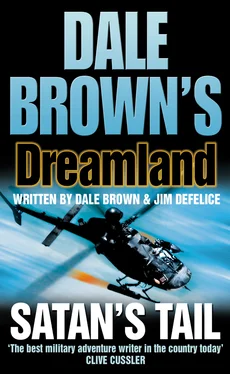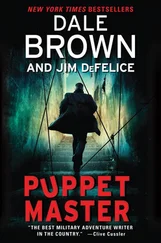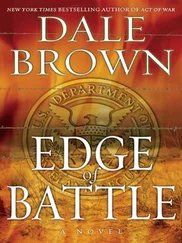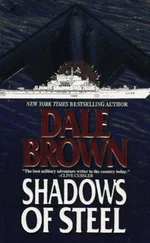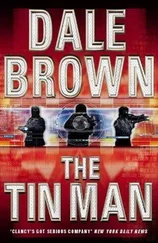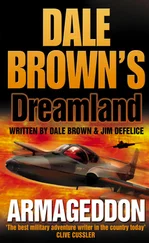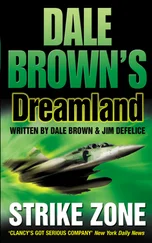‘Eyes, what do we have?’
‘Two boats. Roughly the size of Super Dvoras. They should be our pirates.’
‘If they are, there’ll be at least two more.’
‘We’re looking. Should we go to active radar?’
‘No, let’s hold off. No sense telling them we’re here.’
Past experience told them that the small boats could detect radar; more than likely they would run away, as they had several times before.
The contacts had been found by a towed array equipped with a passive sonar system to listen to the sea around it. Designed for use in the comparatively shallow waters, the system compiled data on surface as well as submarine vessels. Like devices such as the AN/SQR-18A (V) Sonar Tactical Towed Array System – used on the Knox-class frigates from the late 1970s on – the Littoral Towed Array System, or LITAS, was built around a series of hydrophones that listened for different sounds in the water. These were then interpreted and translated into ship contacts.
In theory, LITAS could hear anything within a twelve-mile radius of the ship, even in littoral waters where sounds were plentiful and easily altered by the shallow floor of the ocean. But like much else aboard the Abner Read and its companion vessels, the new technology still needed some adjustments; five miles had proven the average effective range thus far on the voyage, and the presence of a very loud vessel such as the oil tanker tended to mask noises very close to it. The approaching storm would also limit the range.
The four-ship war group Storm headed was as much about testing new technology as she was about catching the pirates. And the Abner Read was the centerpiece of both the task group and the tests. Named for a World War II destroyer that fought bravely in the Pacific until being sunk by kamikazes, the new ship had all the spirit of her predecessor but looked nothing like her. In fact, though she was called a destroyer, she bore little resemblance to other destroyers in the U.S. Navy – or any other navy.
It had often been said that the U.S. Navy’s Arleigh Burke destroyers represented the culmination of nearly one hundred years of warship design. Truly, the Arleigh Burkes were the head of the class, in many ways as powerful as World War II battleships and as self-sufficient. The Abner Read showed what the next one hundred years would bring. Indeed, there were many who hadn’t wanted to call her a destroyer at all; proposals had ranged from ‘littoral warfare ship’ to ‘coastal cruiser.’ The Navy might be ready for a radical new weapon, but a new name seemed too much of a break with tradition, and so she was designated a ‘destroyer, littoral’ – or DD(L) – the first and so far only member of her class.
At 110 meters, she was a good deal shorter than the Arleigh Burke class, closer in size to a frigate or even a corvette. Where the Arleigh Burkes had a bulky silhouette dominated by a massive radar bulkhead, a large mast, and thick stacks, the Abner Read looked like a pyramid on a jackknife. A pair of angled pillboxes sat on the forward section of the deck, which was so low to the water, the gun housings were generally wet. Her stern looked like a flat deck; the section over what would have held the rudder on another ship was open to the ocean, as if the sea wanted to keep a finger on her back. The ship didn’t have one rudder – it had several, located in strategic spots along the tumbleform hull. The rudder and hull design made the Abner Read extremely maneuverable at low and high speed. And while the exotically shaped underside and wet deck took a bit of getting used to, the Abner Read had remarkably good sea-keeping abilities for a small ship. It didn’t so much float across the waves as blow right through them. Stormy ocean crossings were almost comfortable, certainly more so than in a conventional ship of the same size, even though the vessel had been designed primarily for shallow coastal waters.
The screws that propelled the ship were located almost amidships, recessed in a faceted structure that helped reduce their sound. They were powered by gas turbines whose exhausts were cooled before being released through the baffled and radar-protected funnel. The engines could propel the Abner Read to about forty knots in calm water. More important, she could sustain that speed for forty-eight hours without noticeable strain.
The three smaller craft that had accompanied the Abner Read to the Gulf of Aden looked a bit like miniature versions of her. Officially called Littoral Warfare Craft, or LWCs, they were designed from the keel up to work with the DD(L). Not only did their captains receive orders from a commander in the DD(L)’s tactical center, but the ship received sensor data as well – each had an integrated imaging system on her bridge identical to the one on the Abner Read . The vessels were crewed by only fifteen men, and in fact could be taken into combat by as few as five, though the mission had shown that a somewhat larger complement would be more comfortable. About 40 meters long, they were roughly the size of a coastal patrol boat and needed only twelve feet of draft at full load displacement. The vessels had a 25mm gun on the forward deck, a pair of multipurpose missile launchers – loaded, in this case, with Harpoon antiship missiles – toward the stern, and below-waterline torpedo and mine dispensers. Smaller than the Abner Read, they had a correspondingly smaller radar signature. Their long, knifelike bows and finlike superstructures had led inevitably to a warlike nickname: Shark Boats.
XP Group 1 – better known as Xray Pop – was one of twelve proposed integrated littoral warfare combat groups that would eventually combine surface warfare ships with unmanned helicopters and aerial vehicles, small submarines, and Marine combat teams. But like Xray Pop, the littoral warfare concept was still very much a work in progress. The Navy had said ‘XP’ stood for ‘extended patrol.’ The sailors who manned the ships knew it actually meant ‘expect problems.’
Storm firmly believed littoral warfare was the Navy’s future. The teething pains he suffered on this maiden mission would help shape warfare for the next fifty years. He’d freed Xray Pop from the engineering spaces and Pentagon offices and dragged littoral warfare out into the real world, and he meant to show it would work.
Which meant sinking the bastards in the little boats.
‘One of the unidentified patrol craft is heading in our direction,’ said Eyes.
‘Do they see us?’
‘Not sure.’
Storm moved back to the window of the bridge. The UAVs designed to operate off the ship’s fantail were running nearly eighteen months behind schedule. Without them, the Abner Read had no beyond-the-horizon capability and in fact had a very limited weapons range. Storm hadn’t intended on operating completely without airborne cover – a pair of P-3 Orions from the Seventh Fleet had been moved up to Kuwait to provide reconnaissance during his operation. But the P-3s had been pulled out for higher priority missions in the Philippines, and the promised replacements had not materialized. And while he had been offered helicopters, these were still back in Pearl Harbor, as near as he could determine.
Not that he would have wanted them anyway. They were too big for the Abner Read ’s low-slung hangar area, which had been designed for the UAVs. They’d have had to be lashed to the helipad.
‘More contacts,’ said Eyes. ‘Two more patrol boats. I think these are the Somalians, Captain.’
‘They’re a bit far from home,’ said Storm, feeling his heart beginning to pound. ‘Are you sure these are not Yemen craft?’
‘We’re working on it.’
Читать дальше
